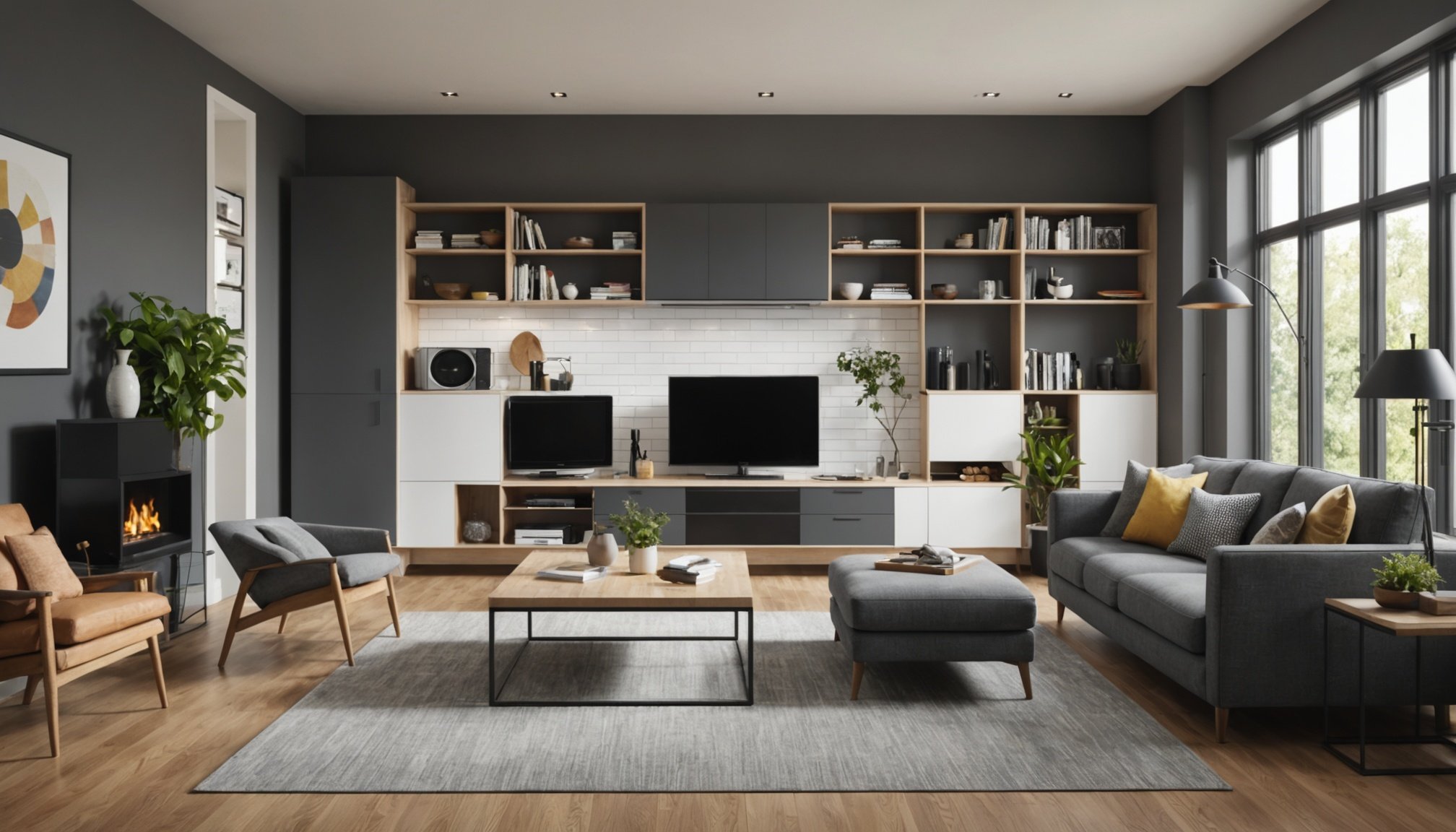Innovative Home Trends
Today’s home design and decor trends are shaped by evolving lifestyles and a growing emphasis on functionality. Modern homes emphasize not just aesthetic appeal but also practicality, with technology integration playing a pivotal role. The rise in smart home devices has allowed homeowners to manage everyday tasks easily and efficiently, making living spaces more convenient and personalized.
Incorporating technology into your home doesn’t mean sacrificing style. Instead, it marries function with form, transforming living areas into adaptable spaces that cater to diverse needs. For instance, voice-controlled lighting systems or automated thermostats can enhance comfort while being energy-efficient.
Also to see : Top Tips for Optimizing Home Space in the UK: Your Ultimate 2024 Guide
The importance of adaptability in home aesthetics cannot be overstated. As trends evolve, so should our living spaces. Flexible design solutions, such as modular furniture and interchangeable decor, allow homes to adjust to both current styles and the inhabitants’ changing preferences. This adaptability not only ensures aesthetically pleasing environments but also maximizes utility.
By staying informed about these trends, homeowners can make better decisions that align with their lifestyle and values, ensuring that their homes remain both stylish and practical. Keeping up with these trends means looking beyond traditional decor to embrace technological advancements and design flexibility.
Also read : Eco-Friendly Home Innovations for a Prosperous Year Ahead
Practical Tips for Optimizing Living Spaces
Enhancing your living space doesn’t need to be overwhelming. By focusing on the essentials, you can transform your home into a more efficient and enjoyable environment.
Space-Saving Solutions
Incorporate multi-functional furniture to maximize limited areas. Pieces like sofa beds or extendable tables serve practical purposes without occupying extra space. Clever storage ideas, such as under-bed drawers or built-in shelving, help keep rooms tidy and organized. Don’t overlook vertical space; installing tall bookshelves or hanging storage solutions can greatly enhance the functionality of your home.
Enhancing Natural Light
Natural light is a crucial element in home design, offering both aesthetic and health benefits. Use light-filtering window treatments to allow ample sunlight while maintaining privacy. Mirrors can be strategically placed to reflect light and make rooms appear larger. Opt for light color schemes on walls and furnishings to maximize brightness, turning small spaces into airy havens.
Personalizing Home Spaces
Reflect your personal style by choosing specific decor elements. Leverage the power of color psychology to create desired moods; blues can calm, while yellows energize. Focus on textures and materials to craft inviting atmospheres – think soft throws and fluffy cushions. Incorporating personal mementos adds warmth and makes a space truly yours, enhancing comfort and connection.
Eco-Friendly Home Innovations
Evolving eco-friendly innovations offer tremendous opportunities in home design, promoting sustainable living. Presently, homeowners can take advantage of a wealth of sustainable options that reshape how we think about efficiency and environmental impact.
Sustainable Materials
Opting for sustainable materials such as bamboo or reclaimed wood not only benefits the environment but also adds a distinctive flair to home design. These materials reduce reliance on non-renewable resources, offering a more eco-friendly home. Bamboo, for example, grows rapidly and requires less water, making it an excellent sustainable choice. Reclaimed wood, on the other hand, repurposes existing resources which lowers deforestation rates and adds rich character to interiors.
Energy Efficiency and Smart Technology
Energy-efficient appliances and smart technology play pivotal roles in reducing household energy consumption, cutting costs, and minimising carbon footprints. Innovations in smart home devices, such as automated thermostats and energy-monitoring systems, simplify managing energy use. The immediate incentive? Lower energy bills and contributions to broader environmental sustainability efforts.
Water Conservation Techniques
Implementing water conservation techniques such as efficient plumbing and rainwater collection systems significantly preserves water resources. Replacing outdated fixtures with low-flow or dual-flush versions can drastically cut water usage. Embracing these eco-friendly solutions ensures a greener, more sustainable home environment.



